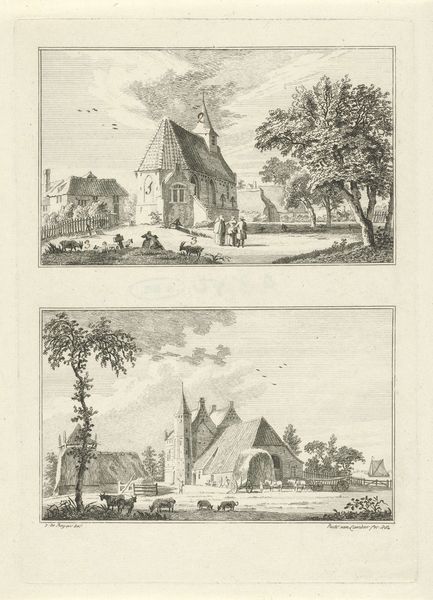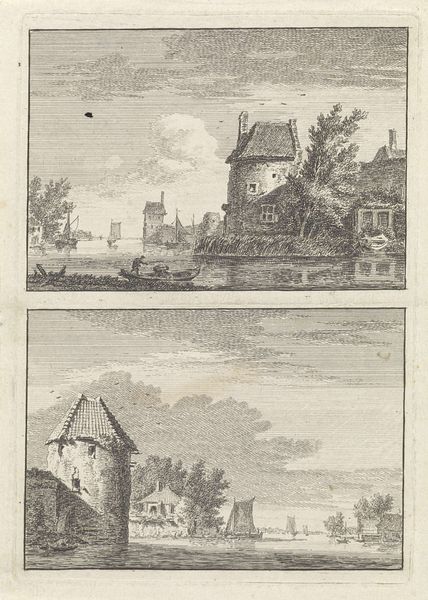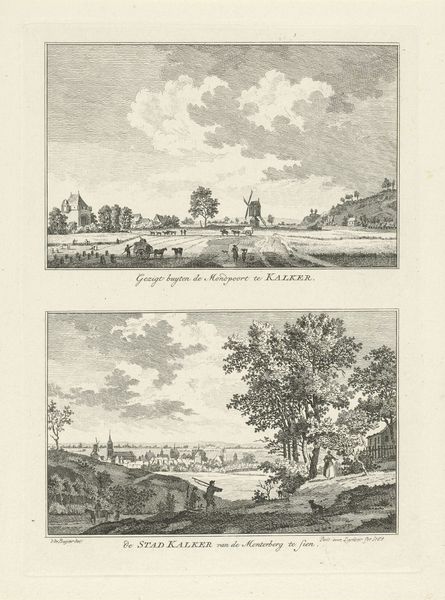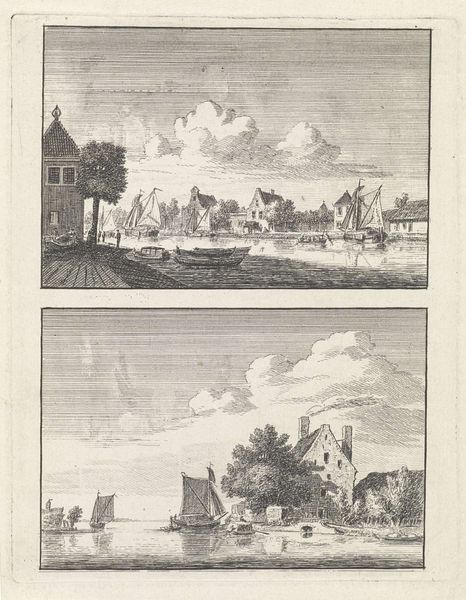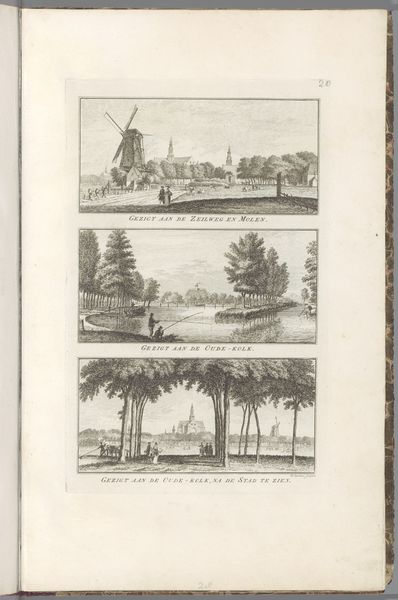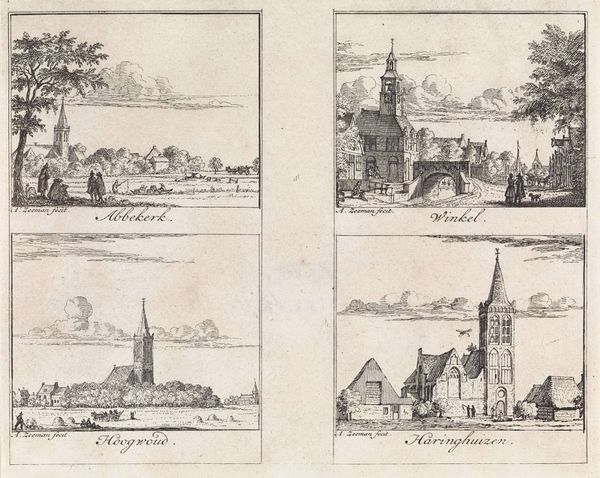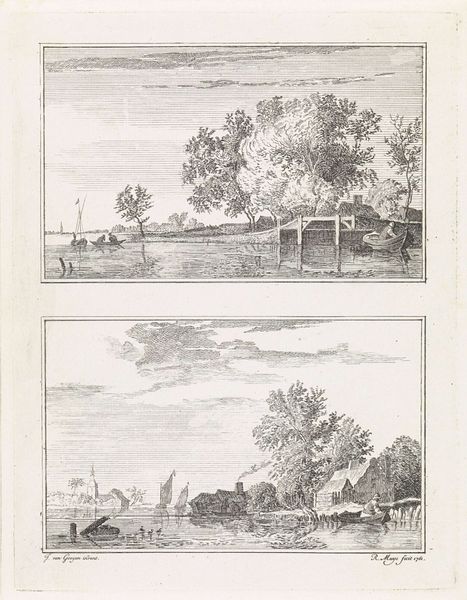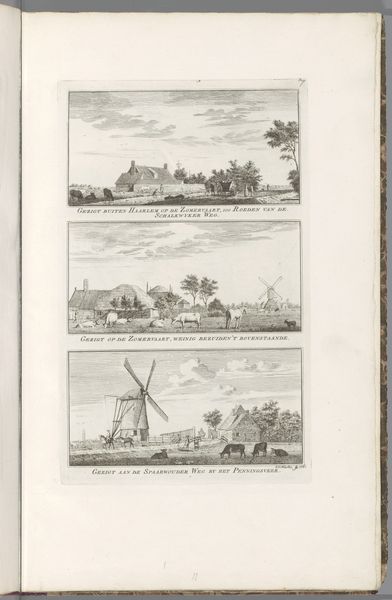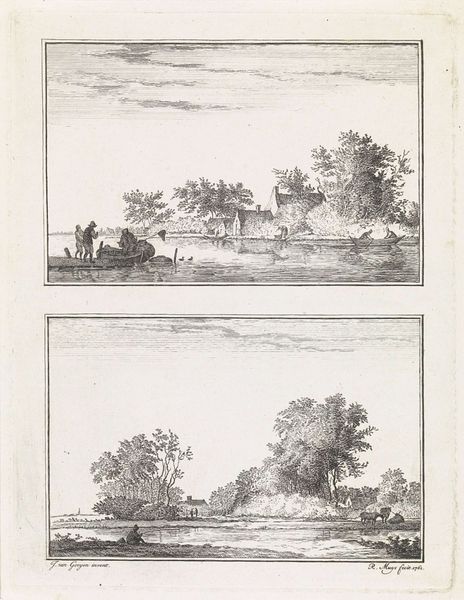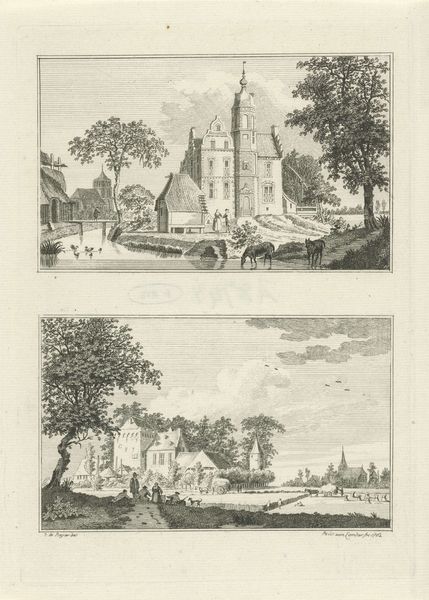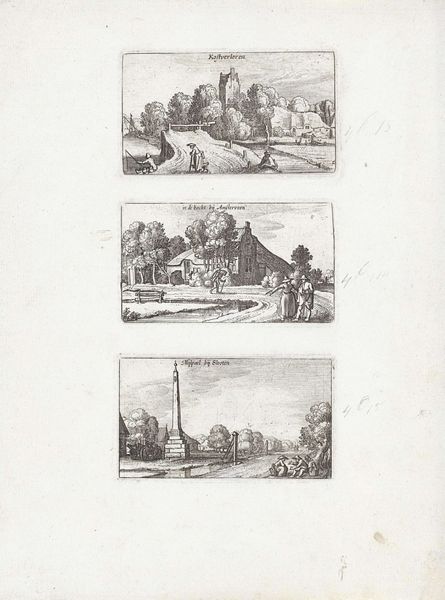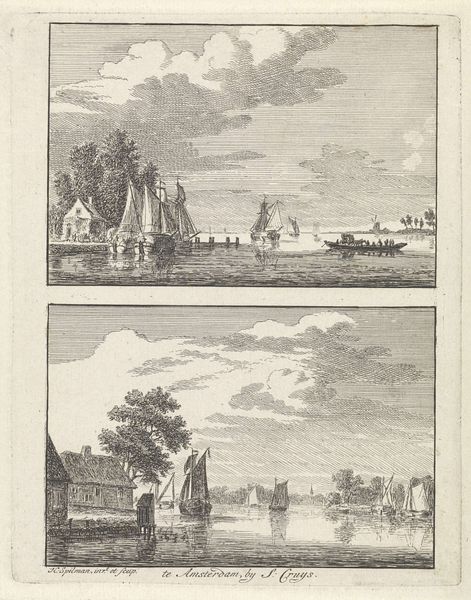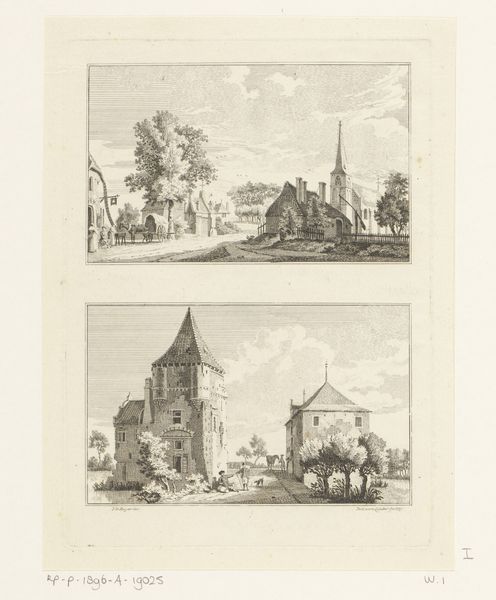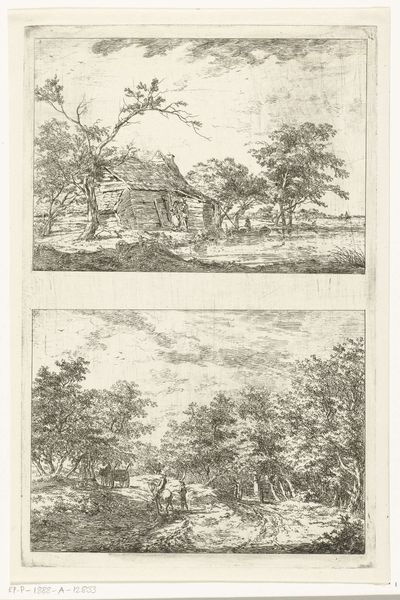
print, etching, engraving
#
dutch-golden-age
# print
#
etching
#
landscape
#
cityscape
#
genre-painting
#
engraving
Dimensions: height 206 mm, width 163 mm
Copyright: Rijks Museum: Open Domain
Hendrik Spilman made this print of six landscapes on a single sheet at an unknown date, using etching. This type of image, which the inscription labels 'pleasant landscapes', was highly popular in the Netherlands. We see picturesque scenes of daily life - windmills, cottages, and waterways bustling with boats. Etchings like these offered accessible views of the Dutch countryside. In Spilman's era, the Dutch Republic was a major commercial power, yet its art often focused on the local and the everyday. What does it mean that wealthy merchants sought images of rural simplicity? And how did the art market shape what artists chose to depict? To understand this print fully, we can turn to period maps, economic histories, and records of the art trade. These sources reveal the complex relationship between Dutch society and its artistic production. Art never exists in a vacuum but is always shaped by the institutions and culture of its time.
Comments
No comments
Be the first to comment and join the conversation on the ultimate creative platform.
